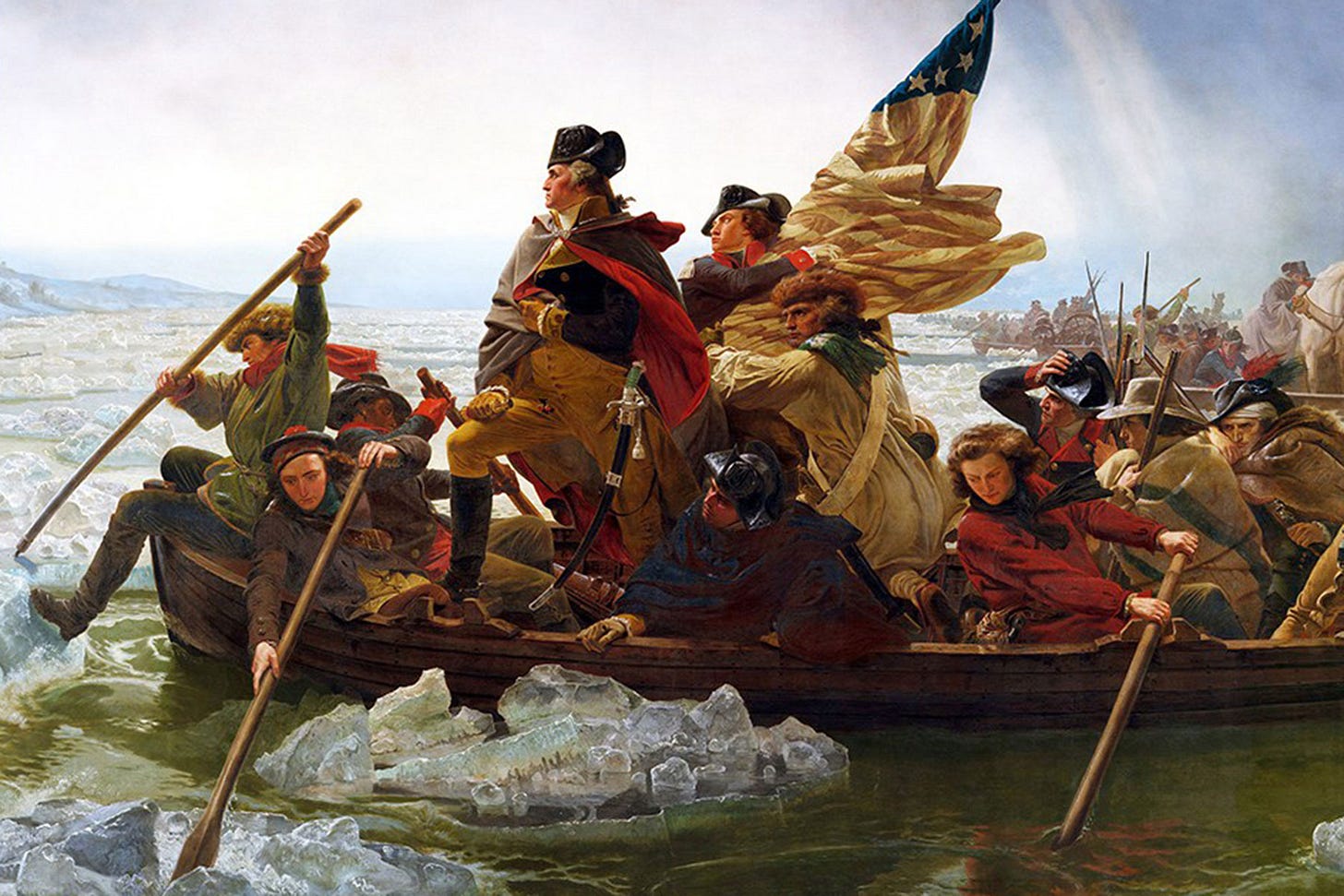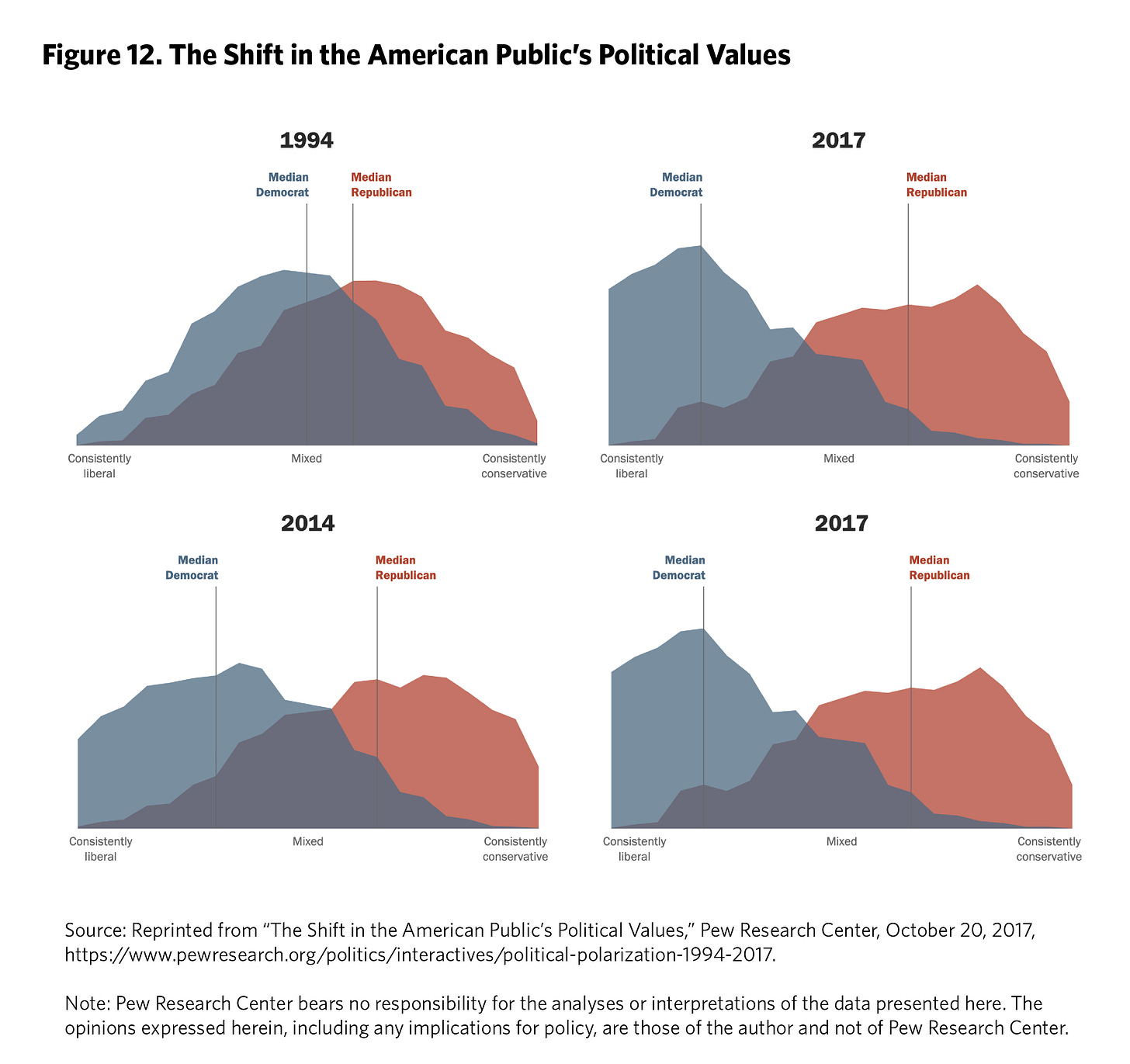Your Turn
Using generational theory to predict the future.
If you found this article interesting, click the like button for me! I would greatly appreciate it :)
Humans are inherently well adapted at pattern recognition, which has helped humans develop and innovate over our evolution. Astronomy, weather, sleep, agriculture, math, behavior, hunting, and many more are all examples. Sometimes, humans discover things that don’t exist. This pareidolia is when you see shapes in clouds, or people think there are faces on the moon.
History and psychology intersect when we examine the patterns in human history. Could there be cyclical behaviors within countries? Are we doomed to do the same things as our grandparents?
In 1991, William Strauss and Neil Howe released a book called “Generations: The History of America's Future, 1584 to 2069.” The thesis of the piece is that American history is in fact cyclical. There are four ~21-year cycles that add up to about a human life of 80-100 years. Each cycle is known as a turning occurs sequentially and is characterized by a unique social and societal “mood.” There are characteristic events, movements, and attitudes of each. Which cycle a generation (gen X, boomers, silent, etc) grows up in influences their development and future direction, marking each generation as a certain archetype. The four distinct turnings/archetypes are as follows,
Turnings
1st Turning/High: Following a crisis, institutions are strong, individualism is weak, and there is a strong conformal sense of direction.
2nd Turning/Awakening: Institutions are attacked, rising desire for autonomy, awareness, and spirituality.
3rd Turning/Unraveling: Spurred by the awakening and antithetical to the high, the unraveling marks the distrust of institutions, strength of individualism, and desire to enjoy their newfound freedom (not without cracks forming in the system).
4th Turning/Crisis: Involves a crisis or revolution where the order is destroyed and rebuilt in response to a perceived threat to national survival. Individualism returns to the community as people work together to overcome the existential threats.
Archetypes
Prophet/idealist generations enter childhood during a high, rejuvenated by a new sense of direction. Awakening as young adults, attacking institutions, and seeking greater individualism.
Nomad/reactive generations enter childhood during the awakening of growing rebellion to the established order. Unraveling as young adults, distrusting institutions, and enjoying freedom/individualism.
Hero/civic generations enter childhood during the unraveling and shaky institutions. Crisis as young adults, institutions, and way of life were destroyed and rebuilt.
Artist/adaptive generations enter childhood during the crisis, a time of great change and personal sacrifice. Young adults during the high, institutions are strong and there is clear direction already.
Based on this framework, you may already have an idea of where we may be in this cycle now or where your generation fits into the archetypes. The worst one is the 4th turning, which coincides with war, depression, or revolution. Things seem crazy right now, so could we be in the unraveling or crisis? According to Howe, we are amidst the 4th turning now, with his new book, “The Fourth Turning Is Here: What the Seasons of History Tell Us about How and When This Crisis Will End.”
American history is often most distinctly marked by its chaotic and transformative events. The American Revolution, Civil War, and Great Depression/WWII are all fourth turnings according to the generational theory. After the Civil War, there was the Gilded Age (high), followed by the Progressive Era (awakening), followed by the Roaring 20s and WWI (unraveling). This culminated in the next crisis of the Depression and WWII, which established the new world order.
The GI generation went through the depression and had to fight WWII, which left the Silent Generation to enjoy the boom years (high) that followed until the 60s. The assassination of JFK marked the beginning of the 2nd turning (awakening), where the baby boomers were rebellious to institutions during the 60s and 70s. Gen X brought us through the unraveling with culture wars, the tech bubble, and the war on terror, taking advantage of whatever freedoms they could, and with systematic cracks growing in the system.
According to Howe, the 4th turning crisis phase began with the 2008 financial crisis. Even with the pandemic and foreign conflicts, it has yet to conclude. This theory is not “pessimistic” per se, as it could be argued that other phases are extremely optimistic; however, the 4th turning is expected to get worse. Only once established institutions fall and are rebuilt can we expect to begin again. No one knows whether it will be an external war, revolution, civil war, or depression. Much like the GI generation, today’s millennials and fringe Gen Z will be young adults to take the brunt of the chaotic events to come.
You can listen to Howe’s depiction of events in real time. As a student of history, there are comparisons to the 1930s not only in the political sphere with Trump/FDR, but also societally. If the awakening and unraveling periods that defined the last 50 years gave rise to modern liberalism, individualism, and institutional destruction, young generations are already starting to change ways. Trump’s populist campaign was underpinned by a communal drive to rebuild strong institutions, but in a different way. You can feel the shifting vibes away from woke ideology back to conservative. Young adults are using drugs and alcohol at record-low levels, and church attendance has actually begun increasing following the pandemic, especially among young adults ready to face the changing world order.
Geopolitical turmoil in the Middle East, Eastern Europe, India, and potentially the South China Sea has the world seemingly on standby for WWIII. External threats are not the only concern, as domestic political polarization has never been higher. There are seemingly insurmountable partisan issues like immigration, climate change, and social rights. The American left and right are at opposite ends of the political spectrum, which could lead to domestic disputes between states or groups.
While it is easy to get worried about what the crisis will be, on the other side is a new golden age with higher trust, more confidence, and even less wealth inequality. There are even signs of ways the nation will come together. There is already some bipartisan agreement in the reshoring industry, critical resource security, and general domestic interests. It is not far-fetched to see a unified push for defense and science/technology efforts with the right catalysts. After the financial crisis, there was debt forgiveness for companies amd banks. Universal basic income, student loan forgiveness, or other debt bailouts are easily on the table this time around, given the measures taken during the pandemic. There will be many more things that I couldn’t possibly entertain right now as well.
There isn’t much to do if we enter a civil war or external war, unfortunately. However, economic issues are more easily prepared for, which is something I’ve been advocating for a while. Controlled exposure to an overvalued stock market, low debt, high savings, lower expenses, safer employment industry, staying in rural areas away from issues, and even paying minimums on student loans until the issue resolves. Under the right circumstances, as long as I’m not shipped into war, there are opportunities to benefit or at least mitigate damage financially from the 4th turning.
New generations will grow into political power, wealth will be transferred, and institutions will crumble/rebuild as the 4th turning finishes and changes to the high period. Howe doesn’t put an exact date on the finale, but suggests that ~2030 would be a reasonable time for it to end. The theory suggests a rocky road in the short term, but with financial and community preparedness, and some optimism, the medium to long term shows a promising future. Until next week,
-Grayson
Leave a like and let me know what you think!
If you haven’t already, follow me on Twitter/X @graysonhoteling and check out my latest post on notes.
Socials
Twitter/X - @graysonhoteling
LinkedIn - Grayson Hoteling
Archive - The Gray Area
Let someone know about The Gray Area and spread the word!
Thanks for reading The Gray Area! Subscribe for free to receive new posts and support my work.





Ray Dalio and George Friedman have been incorporating aspects of this in the last year or two. Ray also adds an additional 3 cycles that are all coinciding currently. I dare say we haven't begun the 'digging in' process yet, not with extreme politics still on the forefront and a massive unpaid federal debt. Nobody knows what the Black Swan/topping point will be. The situation with Iran, with major players now taking sides, is one of many scenarios.